In the pantheon of showbiz families, from the Barrymores to the Baldwins, the most fascinating has to be the Ormonds. This strange bunch directed Lash La Rue westerns, took the Three Stooges on tour and made country-western hokum and sleaze epics until a near-fatal plane crash turned them into born-again Christians. With a twist of faith, they went on to make weird religious films like The Burning Hell and The Grim Reaper, starring none other than the Reverend Jerry Falwell.
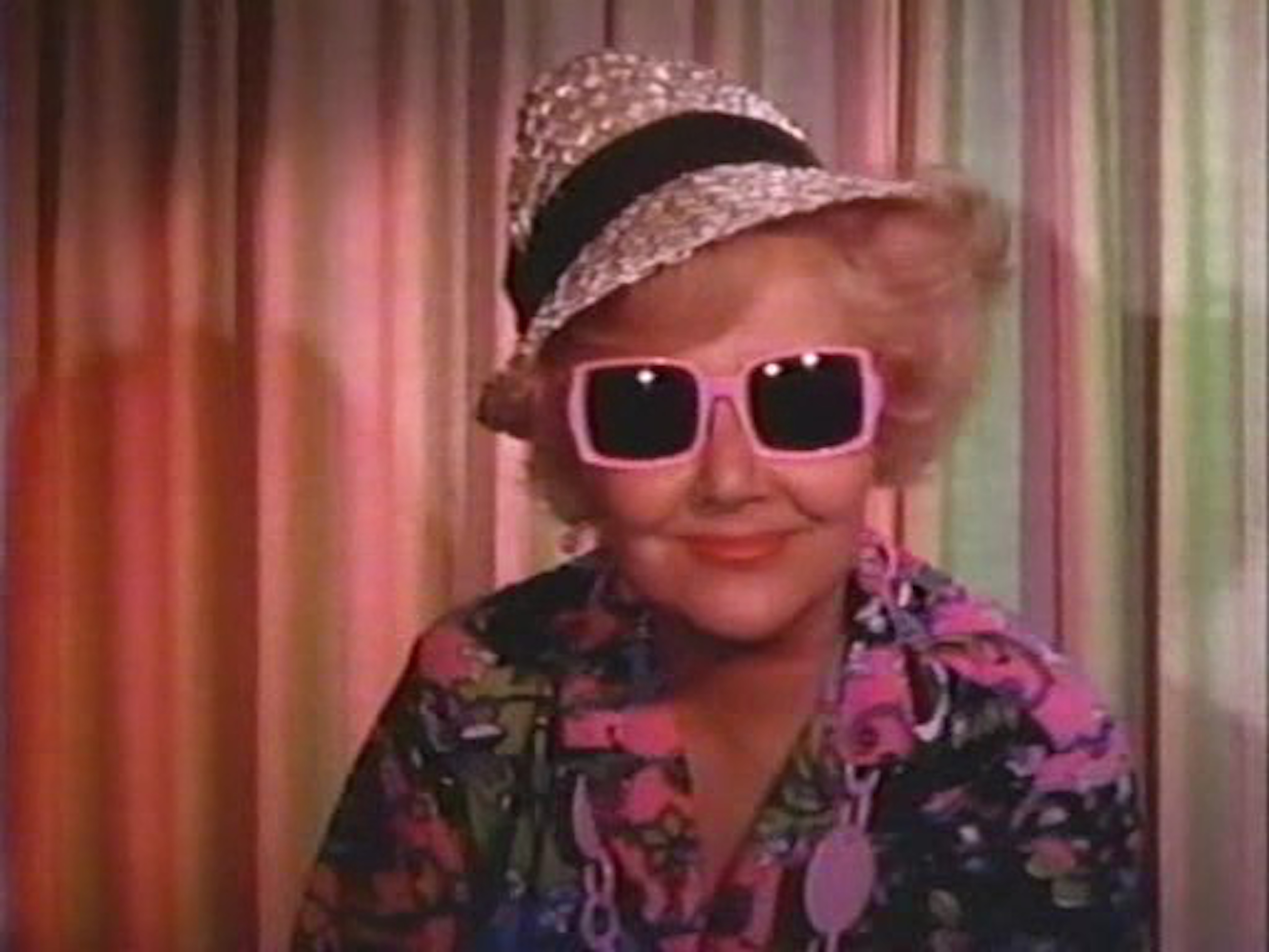
Their story begins with June Carr, the matriarch of the clan, who was just 14 years old when she got a part in a show called 5 & 10 Cents Follies, produced by Frank Capra. Showbiz was in her blood- her mother Norma, performed in specialty acts in vaudeville and her father ran a notorious Broadway nightspot that was frequented by gangsters like Legs Diamond. Carr, whose forte was comedy and dance, went on to perform alongside the likes of Bob Hope, Milton Berle and Ginger Rogers. But in 1938 at the Capital Theater in Portland, Oregon, she saw the magician and master of ceremonies. “Rahn” Ormond, and said to the theater’s owner, “You see that guy over there? I’ve never seen him before, but I’m going to marry him.” They were hitched three weeks later.
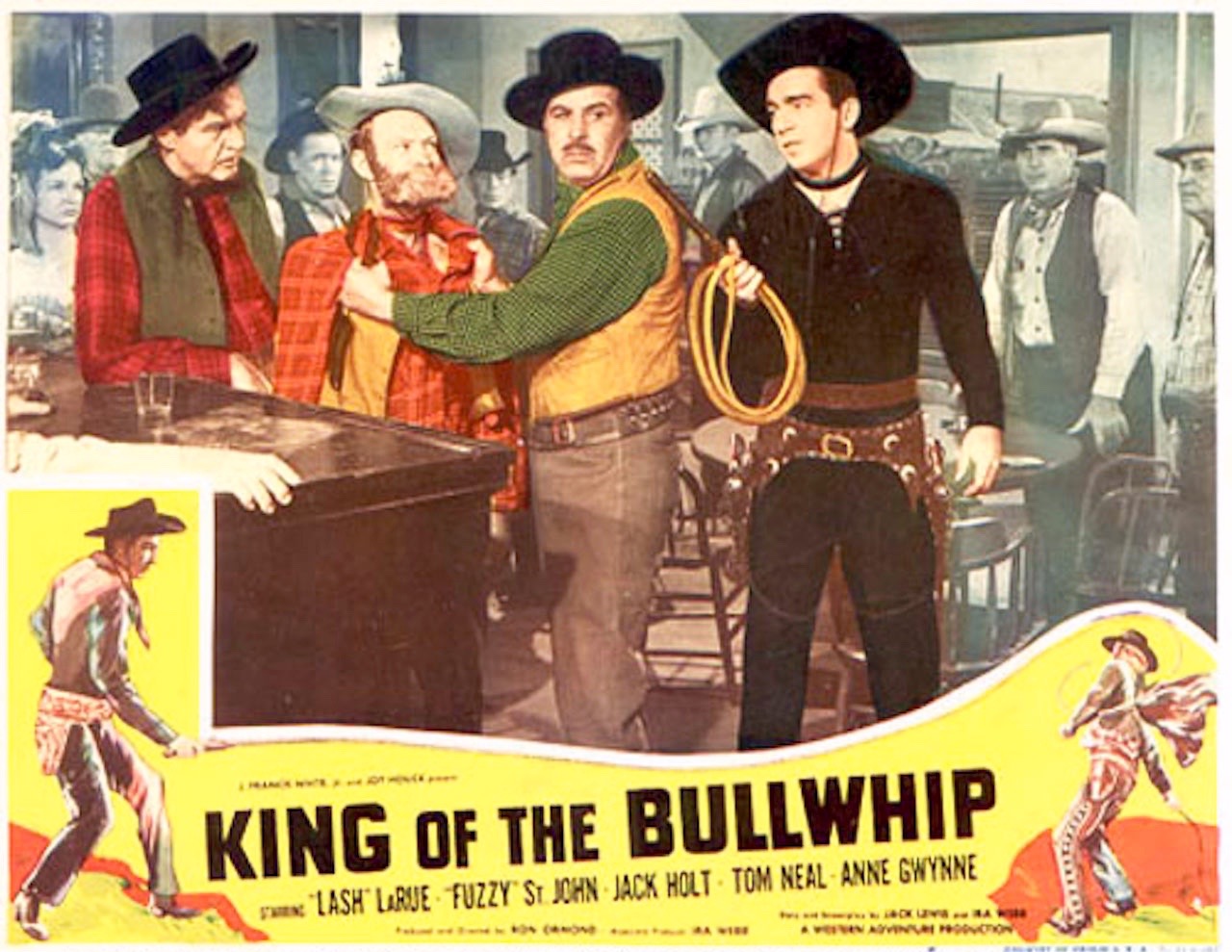
The Ormonds hit the road, traveling and performing until the birth of their son, Tim, in the late 40s. Bela Lugosi was chosen to be the child’s godfather- a typical Ormond touch. They settled in a Hollywood neighborhood packed with movie star cowboys. One night, former hairdresser and B-movie western star Lash La Rue (whose gimmick was that he dressed in black and carried a whip) knocked on their door and asked them to help him take his act on tour. Soon Ron Ormond was writing and directing scores of cheaply made LaRue westerns, like King Of The Bullwhip (1951), The Thundering Trail (1951) and The Black Lash (1952).
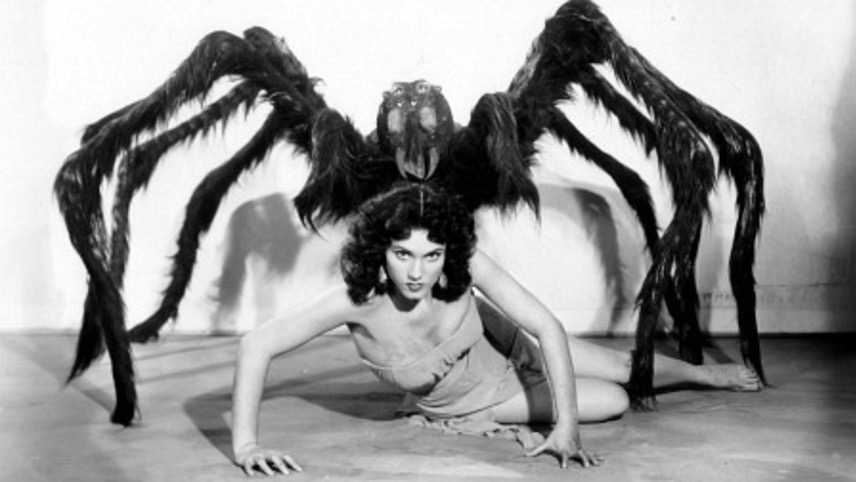
During the 50’s, they managed personal-appearance tours for the notorious drunk cowboy star Sunset Carson and the Three Stooges (the Shemp years). But their most memorable effort was the hilarious, grade-Z horror mess Mesa Of Lost Women (1953), in which they pieced together some footage from an unfinished horror film called Tarantula, adding sexy girls with eight-inch fingernails, a maddening repetitive flamenco score, a pitifully beat-up giant rubber spider and a mad scientist played by Jackie Coogan (Uncle Fester on the The Addams Family).
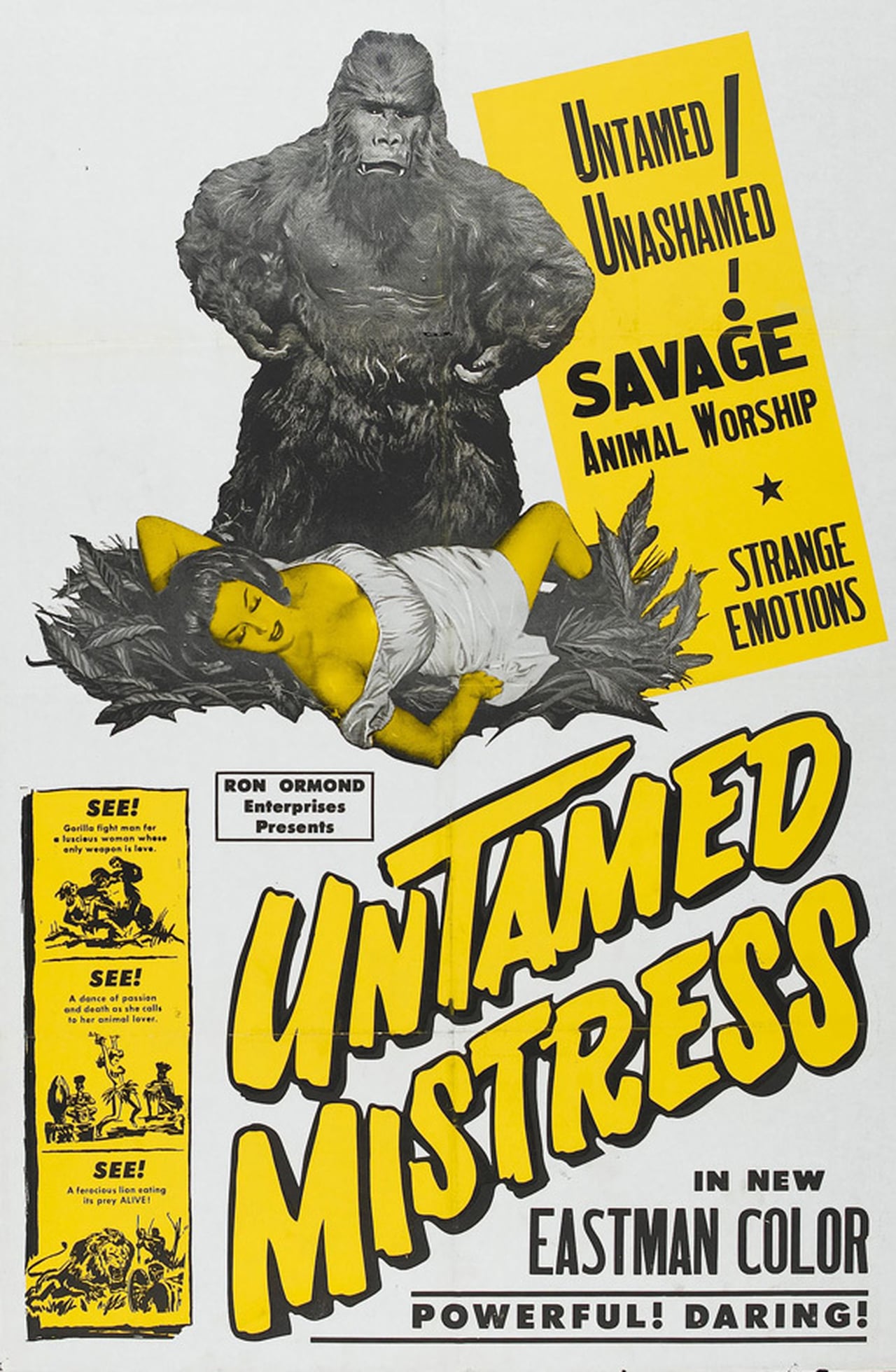
In the same vein was Untamed Mistress (1957), stitched together from a short Sabu film called Black Panther. They removed all the footage of Sabu and added a sordid story line about Velda (the buxom Jacqueline Fontaine), who was raised in the jungle by horny gorillas. The exploitive ad campaign screamed, “The kind of woman man or gorilla would kill…to keep.”
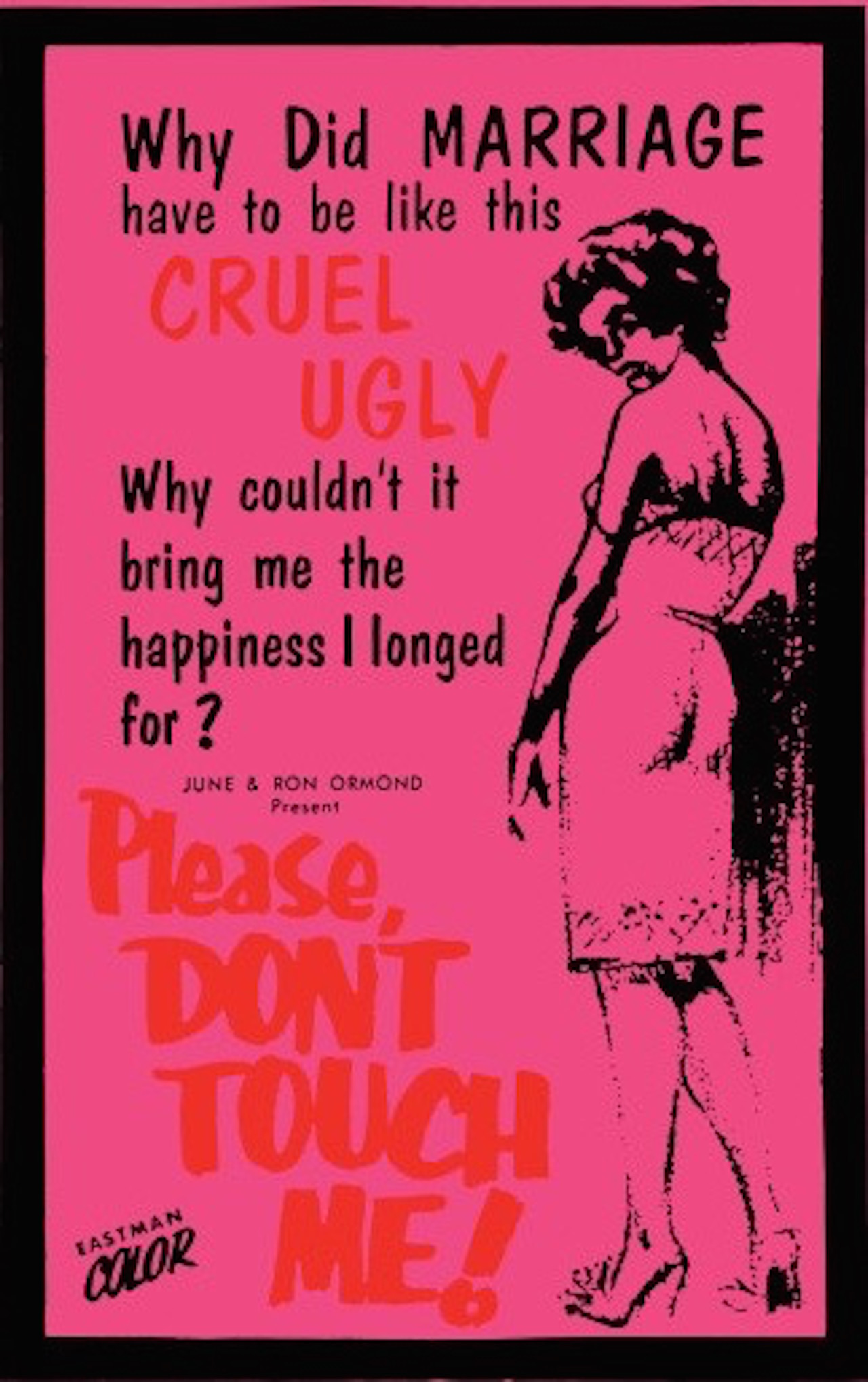
In 1969, the Ormonds made Please Don’t Touch Me, the bizarre Freudian study of a frigid wife who was raped at 17 and can’t submit to her husband’s caresses but likes to walk around the house in a low-cut, skin-tight, metallic toreador outfit (with an apron to show she’s domestic) and complain to her meddling mom. She finally decides to see a shrink (La Rue), who brings in a hypnotist who gets to the root of her problems with his dancing fingers. All this interspersed with shots of a man from Borneo rolling on broken glass, self-flagellants in the Philippines, giant scrotal tumors, a spinning hypnotist wheel, and even footage of open-heart surgery.
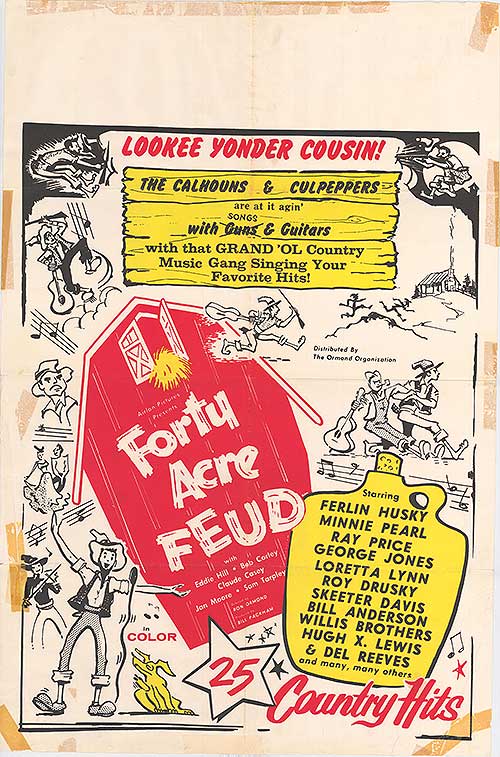
In the mid-60’s, the Ormonds moved to Nashville, which was packed with country-western stars just itching to break into the movies. It was there that the Ormonds churned out White Lightnin’ Road (1965), about stock-car races, moonshine and barnyard tramps; Forty Acre Feud (1965) starring country singing superstars Del Reeves, Bill Anderson, George Jones, Ray Price, Skeeter Davis, Loretta Lynn and the eternally annoying Minnie Pearl; and The Girl From Tobacco Row (1968) featuring Tex Ritter as a strict preacher with a sexpot for a daughter.
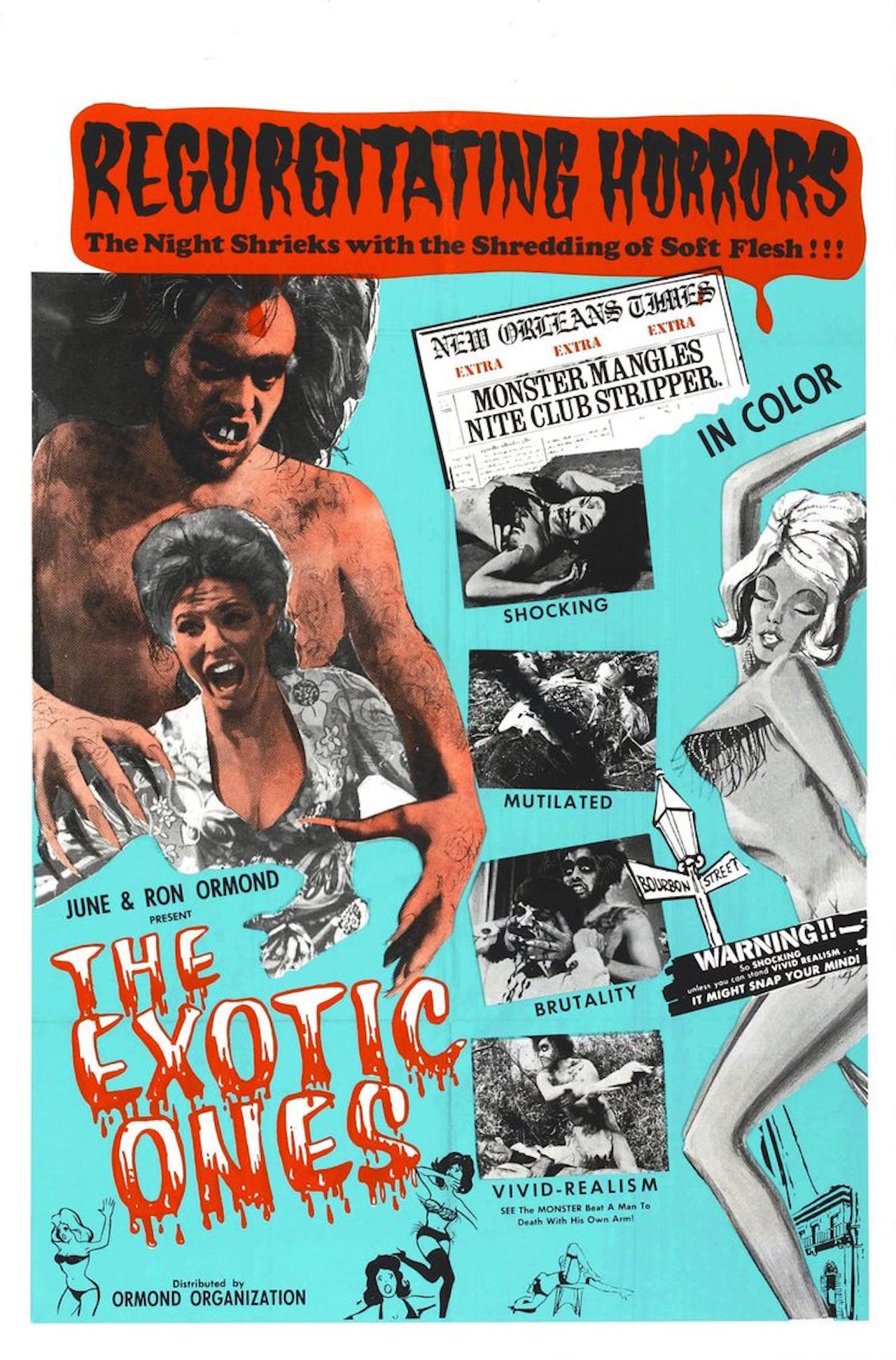
The sleaziest, most outrageous movie of the Ormond’s career is The Exotic Ones (aka The Monster And The Stripper) (1968), set in a New Orleans strip club run by a ruthless gangster named Nemo (Ron Ormond in a Beatles wig) who deals with double-crossers by making them drink the contents of a spittoon.
June Ormond played Bunny, who hires and scolds the girls- she even does a wild dance number with the word LSD written on her bloomers.
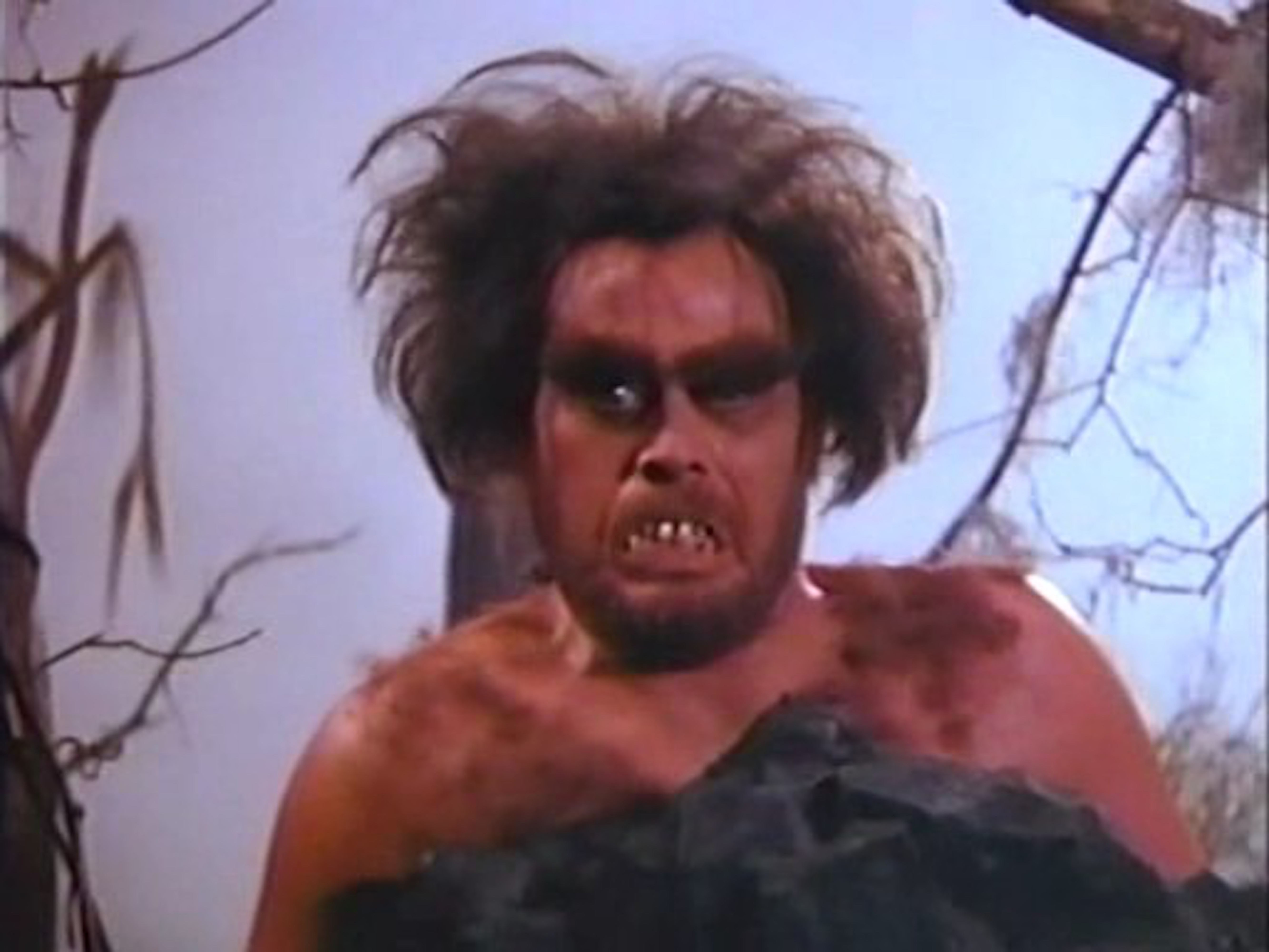
When a man/monster is captured in the swamp (played by rockabilly star Sleepy LaBeef, complete with loincloth, a fright wig and fake teeth), he becomes the specialty act at the club, biting the heads off chickens. But he soon runs amok, rips off a stripper’s breast and pulls a man’s arm off and beats him to death with it.
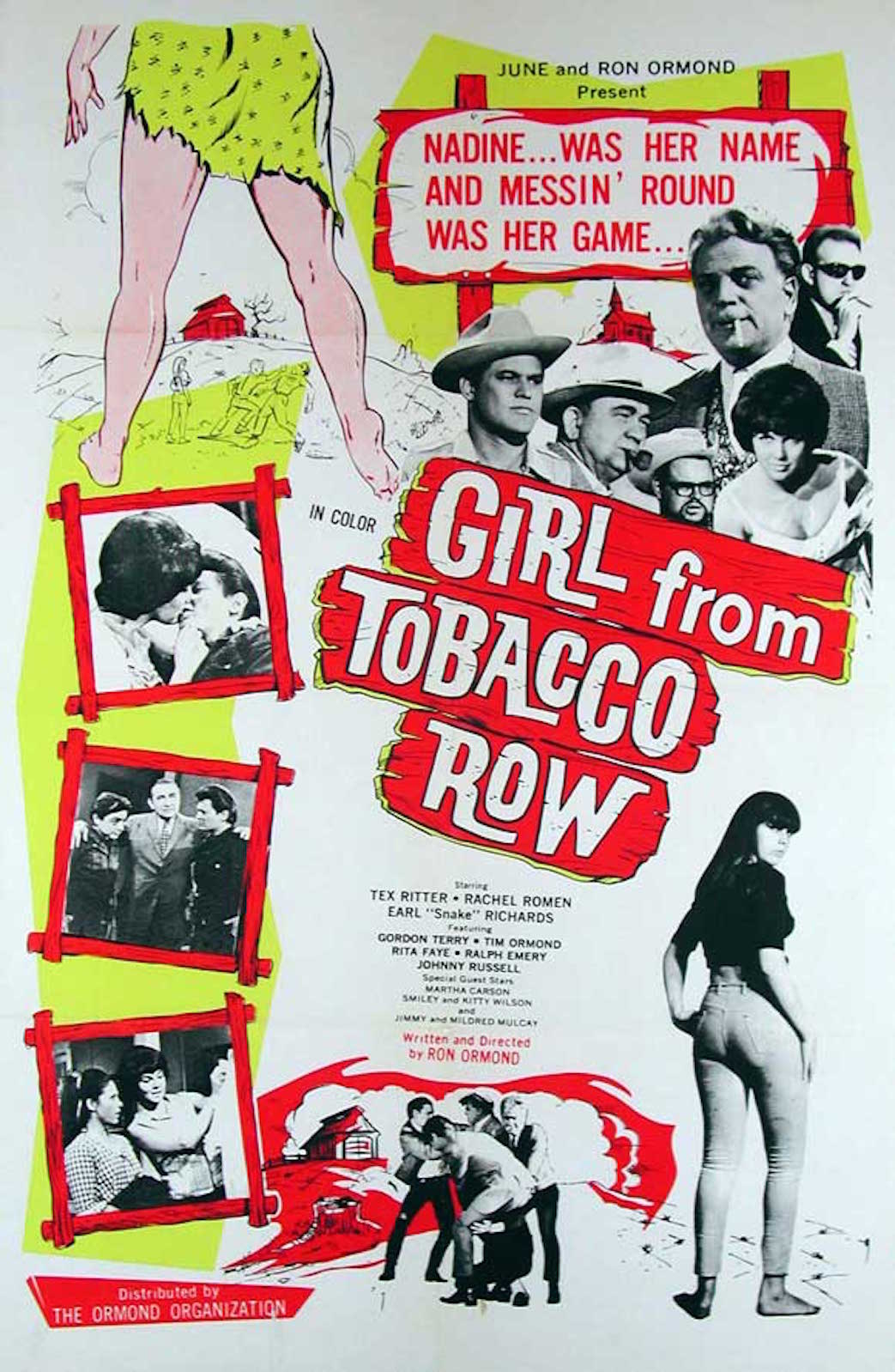
On the way to the Louisiana premiere of The Girl From Tobacco Row, the Ormonds’ private plane crashed into a cow pasture. Ron suffered injuries to his back and ribs and June fractured three ribs and dislocated vertebrae, but their son Tim was unhurt. They referred to the “accident” with mystical significance, believing that the Lord had spared them for some higher purpose. A second forced landing convinced them to devote their lives to God.
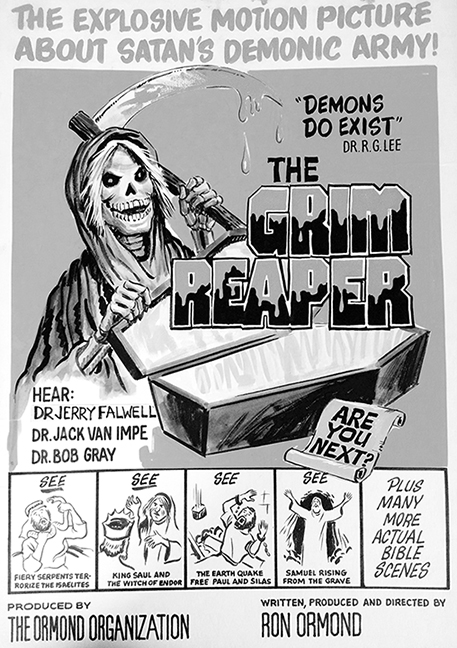
After being introduced to a hellfire-and-brimstone Southern Baptist preacher, Ron directed The Burning Hell (1974), in which a biker, after renouncing God, is instantly decapitated in an accident and goes straight to hell. Then there was The Believer’s Heaven (1977) and The Grim Reaper (1976) starring Jerry Falwell.
Ron Ormond died of cancer in 1980. June Carr Ormond died of complications of a stroke at age 94 in 2006. In a detailed article about the Ormonds’ amazing career in Filmfax, author Jimmy McDonough brilliantly summed them up: “Guy in a gorilla suit. Girl from Tobacco Row. Jesus Christ. That’s exploitation, you know.”
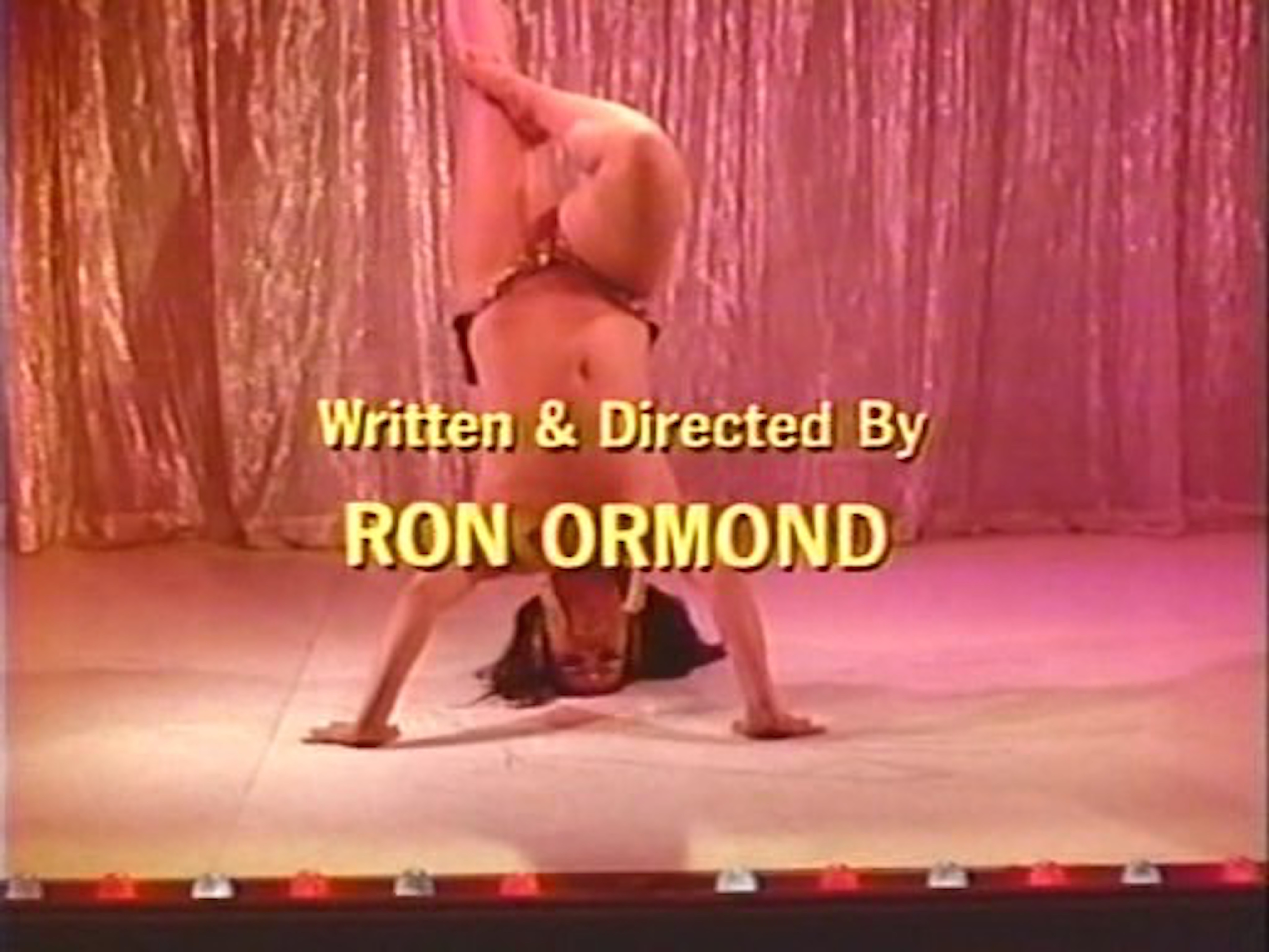

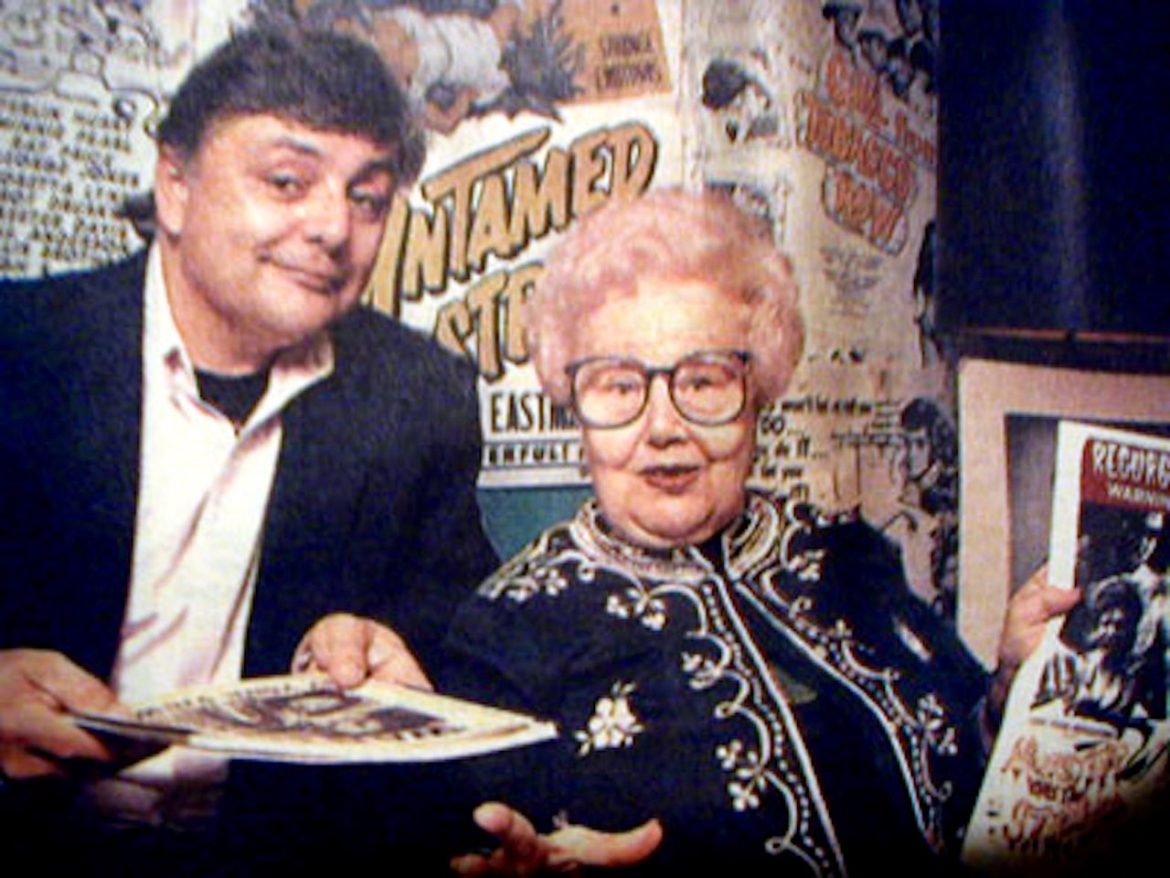
I did love “the eternally annoying Minnie Pearl” comment. Wasn’t she, though.
God yes! I always wanted to rip that price tag off her hat.
Again, pure revelation and the joy that comes with it ! I love this